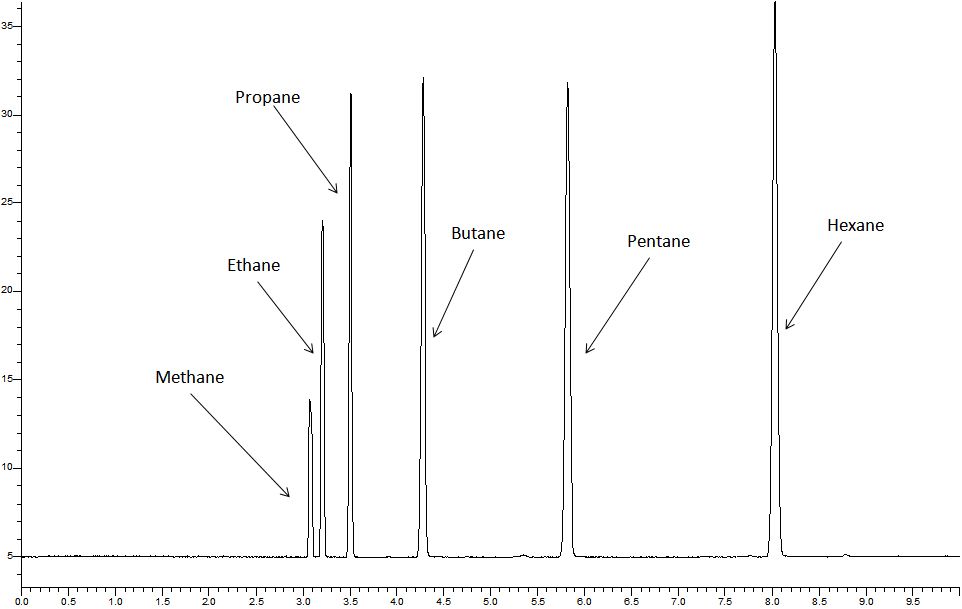-
- Posts: 15
- Joined: Wed Oct 05, 2011 6:44 pm
I am new to GC (as in, JUST starting out) and already, issues... I'm tasked with analyzing reactor gas, but that is not where my problem lies. I'm struggling with the standard!
I am running GC/FID on a gas standard that contains C1-C6. No matter what oven conditions and flow rates I run, I am missing a peak, which I believe to be hexane. I am certain I am getting methane, as the retention time is reproducible from another standard. and there are 4 other peaks, but no 6th peak. All components are at 100ppm in He. I am not getting full separation between methane and ethane, but there are 2 distinct retention times. I have varied enough the wrong way to completely coelude methane and ethane, but I can't seem to pull whichever component is hiding out!
Here are the ranges of variables I tested:
Carrier Gas: He (varied between 1 and 2 mL/min)
Inlet: 300 C
Detector: 300C
Oven Temp: 35C, 40C, 50C, 75C, 100C, 40C for 4 minutes followed by a 15c/min ramp to 250C
Split: 50mL/min, 10:1, 100:1
Please feel free to offer the most obvious solutions. Like I said I am very new to this, and think I should not be struggling so hard with a standard. Also, If you need other info, just let me know and I'll provide it.
Thanks for helping out a newbie!

